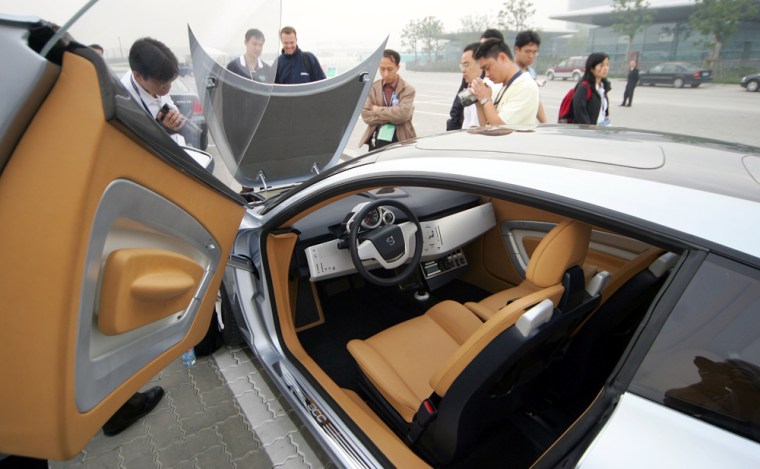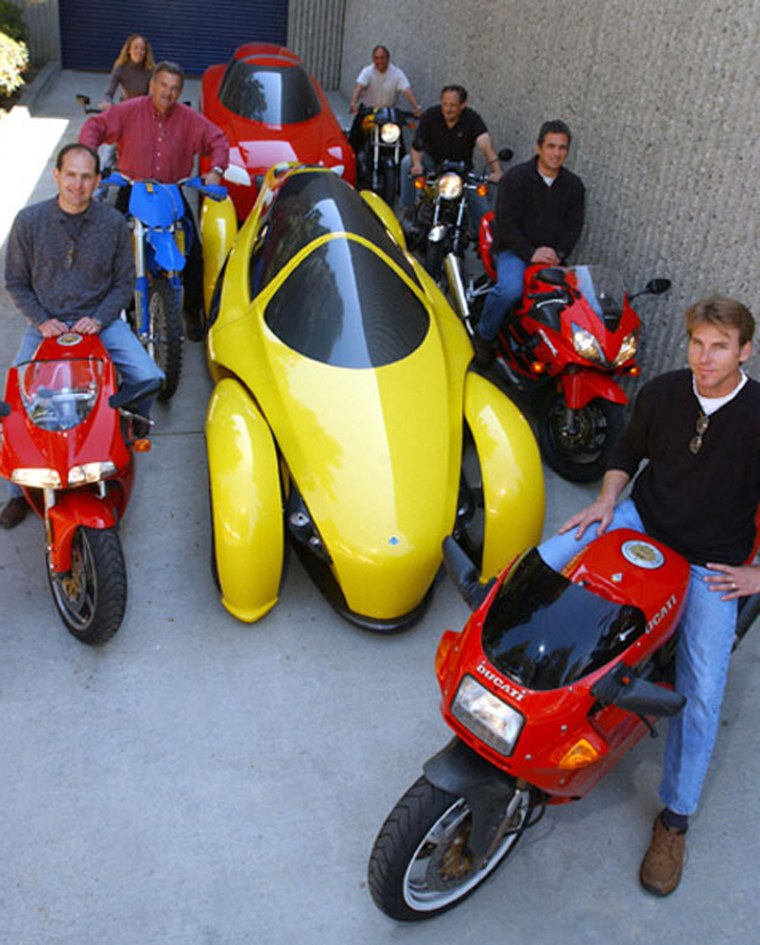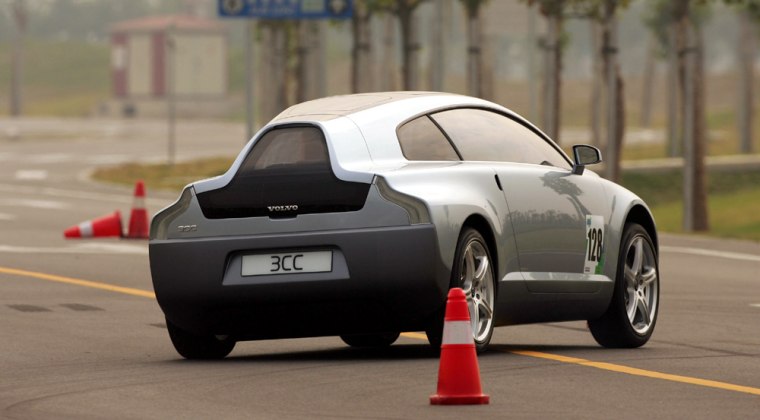Hoping that cool will convince Americans to make room for environmentally friendly vehicles, Volvo has unveiled a three-seat car that's tapered in the back for a more aerodynamic and energy efficient drive.
"We've brought you an idea of what might be in your garage in eight to ten years," Volvo North America Director Dan Werbin told reporters at Challenge Bibendum, a green vehicle rally named after sponsor Michelin's fluffy white mascot.
The car, dubbed the 3CC, is 30 percent more aerodynamic than a Volvo S40 sedan, the company said, so that regardless of what fuel source it runs on it will use less energy. And while it's billed as a car for up to three adults, the 3CC would actually seat two children in the back if needed.
Werbin said the 3CC reflects Volvo's conviction that a green vehicle won't sell well in the United States unless it's also "safe and really cool."

Lars Erik Lundin, general manager of Volvo's research center in Camarillo, Calif., added that "the emotional power of good looks" is a critical motivator for purchasers.
"The main challenge" in designing the car, he noted, "has been to find the right balance" between safety and environmental benefits.
The lightweight carbon fiber shell, for example, is balanced with a reinforced steel frame. And a low center of gravity helps with cornering.
Runs on laptop batteries
Volvo says it designed the 3CC to be "future proof" by making sure that the engine layout can be modified to run on fossil fuels, fuel cells and even as a gasoline-electric hybrid.
The version taken to Shanghai has zero emissions, running entirely on electric batteries — in fact, 3,000 lithium ion cells, the same batteries that laptops use.
The electric 3CC can reach up to 180 miles on a single charge, Volvo says, farther than earlier electric vehicles because of improved battery technology. On top of that, the company said, the charge time has been reduced, the 3CC can reach a top speed of 85 mph and get from 0-60 mph in 10 seconds.
Ichiro Sugioka, chief science officer on the project, told MSNBC.com that the lithium ion batteries could be the breakthrough needed to revive electric vehicles, which had hit a wall with lead acid and nickel metal hydride batteries.
"The price is coming down so fast," he said of lithium ion, noting that while one cell costs about $3.50 today, projections are just 30 cents by 2015.
Transition to two-seater?
Sugioka added that Volvo sees the 3CC as a way to get drivers to accept an even more radical concept from Volvo: a two-seater car that's nearly half as wide as a typical sedan.

Volvo disclosed a few details about its Tandem vehicle earlier this year, saying it uses "50 percent less space than a current car without compromising Volvo's traditional safety standards." The two Tandems built so far are 51 and 57 inches wide.
Sugioka envisions a day when such cars will relieve congestion by allowing them to share road space, much like aircraft flying in formation.
"Once they get used to this," Sugioka said pointing to the 3CC, "the Tandem will be accepted."
What's not clear, though, is whether Volvo will ever put its corporate money where its creative mind is.
In its 3CC press release, the company emphasized that the car is "is a technological demonstrator and there are no current plans for production."
